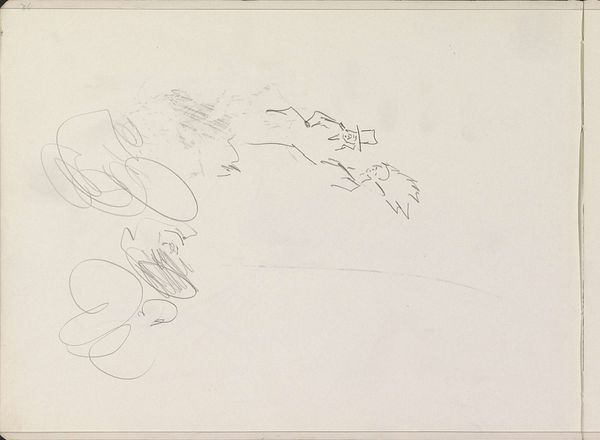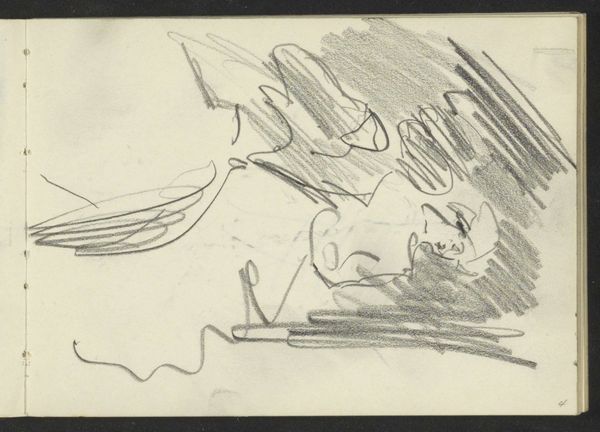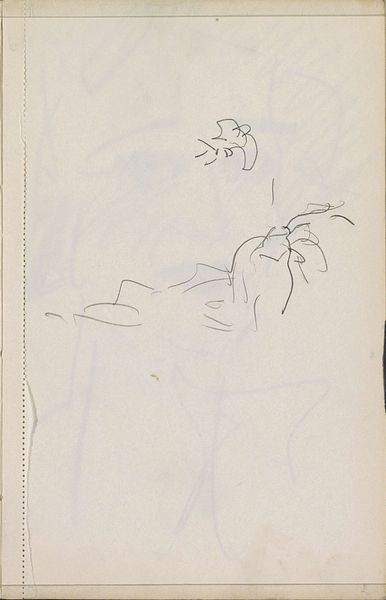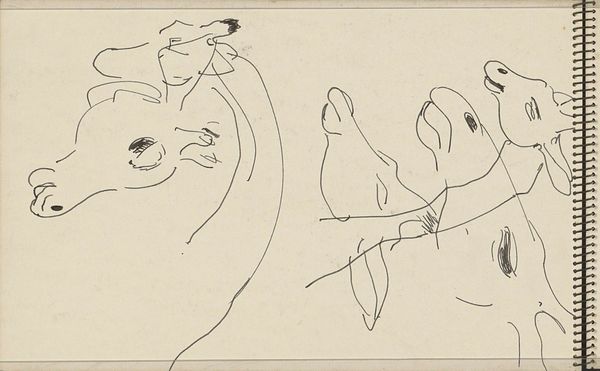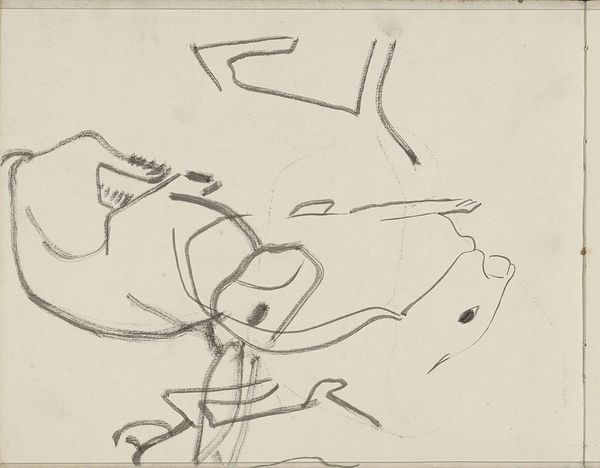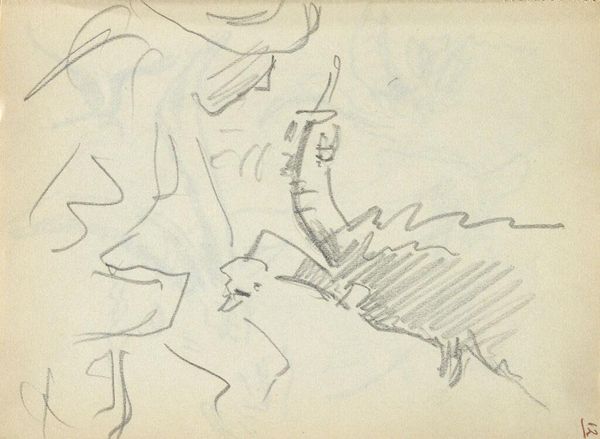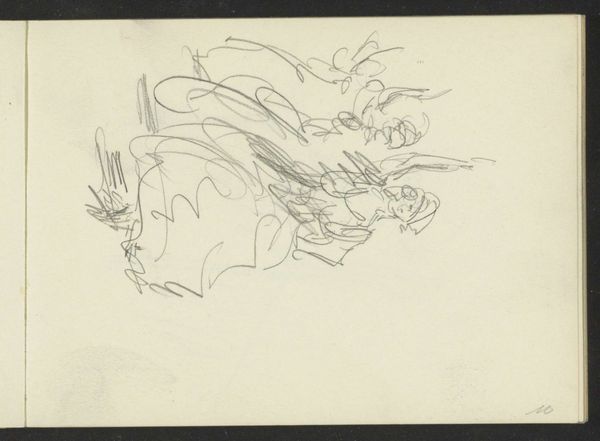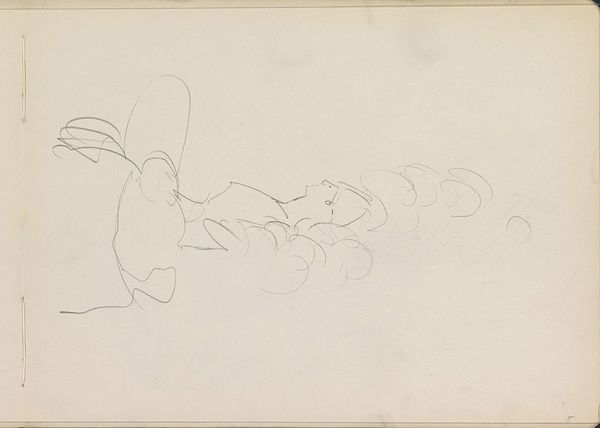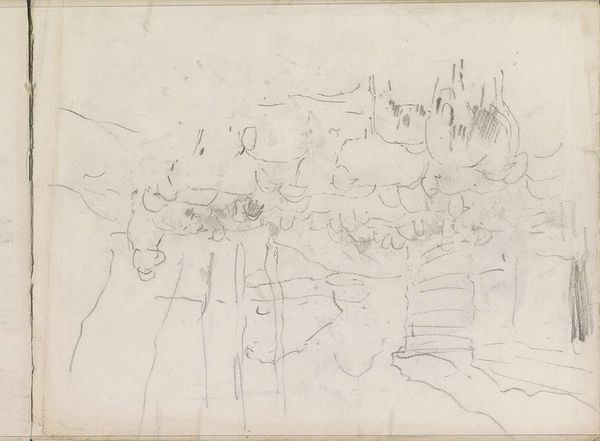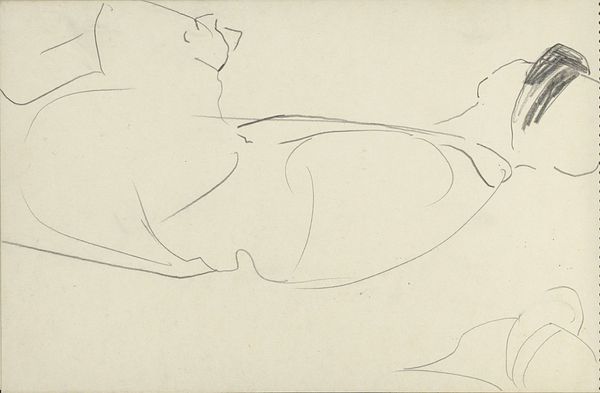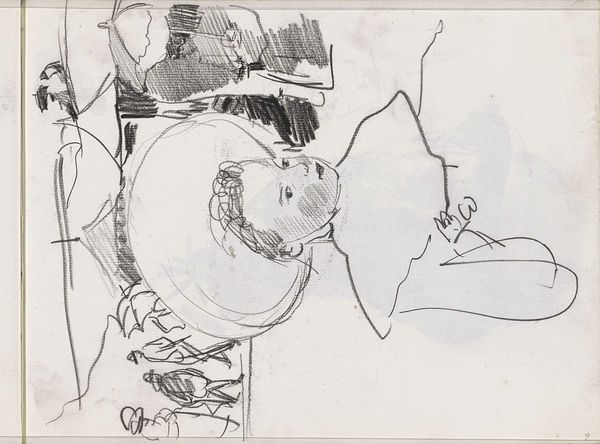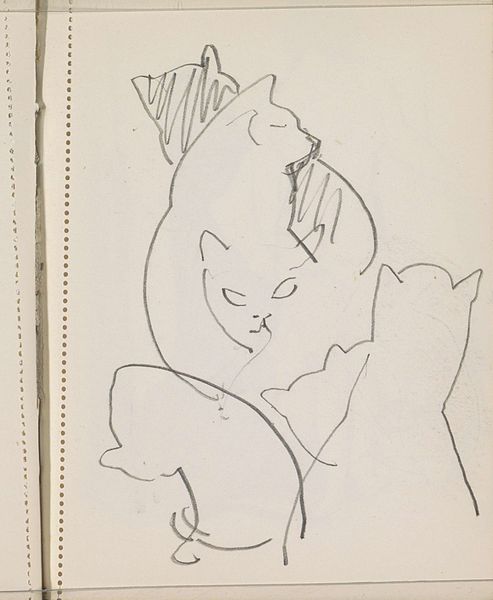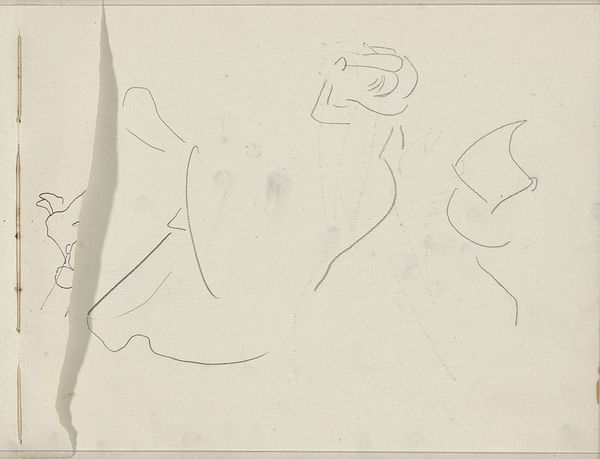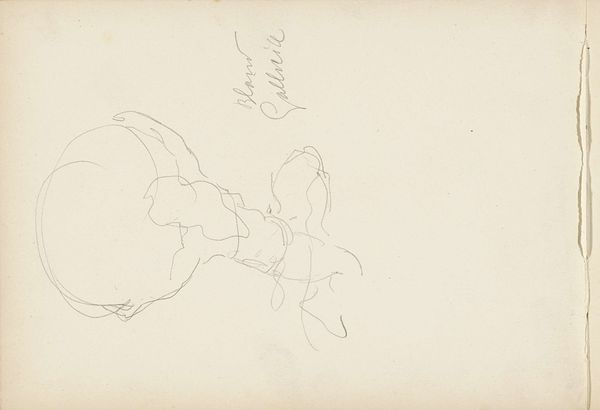
Copyright: Rijks Museum: Open Domain
Curator: Here we have "Woman with Hat, possibly Seated" by Isaac Israels. The work, residing here at the Rijksmuseum, was created sometime between 1875 and 1934 and is a pencil drawing. Editor: The lines are so free and light. It’s like capturing a fleeting thought, a momentary impression of a person. The hat itself dominates, it becomes this abstract landscape. Curator: That lightness, the rapid execution, is really characteristic of Israels’ approach, deeply embedded within the context of Impressionism, but what about the significance of portraying a woman in this style at this time? Editor: Well, hats have always been imbued with status, haven't they? It feels less like a grand statement of wealth and more an exploration of the sitter’s interior life. Note also how it reflects, say, 17th-century Dutch painters rendering of interior, domestic life: there is no setting to this work, except for the implied space of intimacy, of being inside, enclosed and private. It's not about public display, or the theatre. It's that brief and spontaneous exchange. Curator: Fascinating observation! Also this places Israels' project directly within the context of Impressionism, and more recent developments toward early Expressionism at the beginning of the 20th century. It reminds me a little bit of those experimental sketches in preparation for the 1905 "Die Brucke" paintings by Kirchner. Israels really puts drawing as an experiment center stage. Editor: And the pencil marks really emphasize that. You can almost sense his hand moving across the paper, searching for the essence of the form, the character. It feels deeply personal, this fleeting and not complete image. I almost have the sensation that there is movement contained in the object - I see that her body can turn, be re-placed and reframed in space. Curator: That directness creates a different type of connection between the viewer and the sitter, because it opens the portrait to experimentation. Editor: A sketch allows us a glimpse behind the veil of formality, a visual shortcut that reminds us that these subjects have lives as yet unframed. Curator: This seemingly simple drawing allows us insight into the process of how both social conventions of display were upended, and how new artistic languages came to be constructed through the quick and ephemeral sketch.
Comments
No comments
Be the first to comment and join the conversation on the ultimate creative platform.
